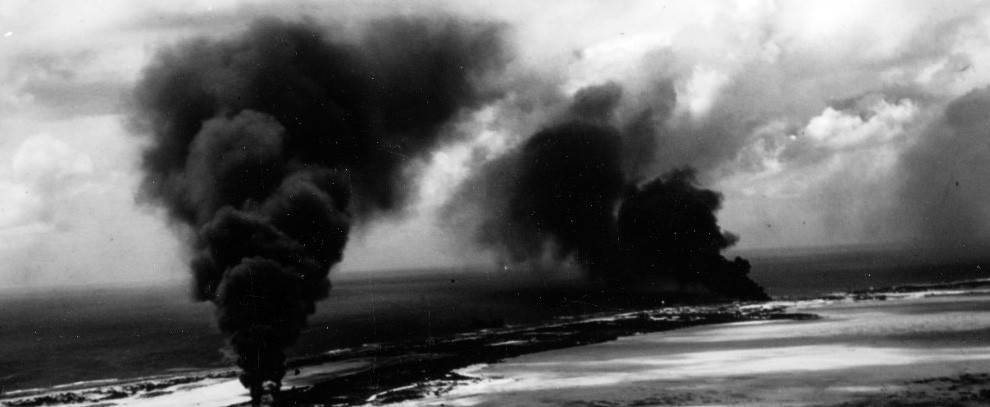
1942-44: U.S. Air Raids on Wake Island
1942-44: U.S. Air Raids on Wake Island
On February 24, 1942, Task Force 16, commanded by Vice Admiral William F. Halsey, Jr., USN, led the Wake Island Raid in an attempt to destroyer the Japanese installations on the island. Fortunately, the bombing and shelling of Wake harmed none of the American Marines, Sailors, and construction workers too badly. The civilian workmen (Contractors Pacific Naval Air Bases) were retained on the island to continue work on defenses. During the October 5-6, 1943, air raids, Rear Admiral Alfred E. Montgomery, Task Force 14, shelled and bombed the island. Rear Admiral Shigematsu Sakaibara, the island's commander, then ordered the execution of 98 remaining civilians that were captured during the initial invasion due to his fear that they would escape and weaken his garrison. The attack was ordered by Admiral Chester W. Nimitz, USN, as a warm-up and practice for his air groups bue was perceived by the Japanese as an attempt to reconquer the island. Beginning on January 30, 1944, PB2-Y's (Patrol Squadron 13 and Patrol Squadron 102) from Midway Island carryout noctural bombing raid on Wake Island to neutralize Japanese airfield installations. Motor torpedo boats Gyroaitei No.5 and Gyoraitei No.6 are sunk during the raid. The strike marked the first time Coronados are used as bombers. The following month, on February 29, PB4Y-1's (Attack Squadron 108, Attack Squadron 109 and Photographic Section 3) carried out low-level bombing raids on Japanese installations on Wake Island. The attempt to recapture the island was essentially abandoned as the U.S. Navy focused on the westward journey to the Japanese homeland.
Image: 80-G-K-16184: Wake Island Raid, airfield and other facilities burn, October 5-6, 1943. Official U.S. Navy Photograph, now in the collections of the National Archives.



